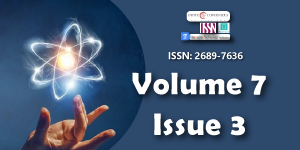Rayleigh Quotient and Surjectivity of Nonlinear Operators in Hilbert space
Main Article Content
Abstract
We consider continuous operators acting in a real Hilbert space and indicate conditions ensuring their continuous invertibility and/or surjectivity. In the case of bounded linear operators, these facts are well-known from basic Functional Analysis. The objective of this work is to indicate how similar properties can be proved also when the operators are not necessarily linear, using as a main tool their Rayleigh quotient and especially its lower and upper bound. In particular, we focus our attention on gradient operators and show a quantitative criterion that ensures their surjectivity through the positivity of an additional constant related to the measure of noncompactness.
Downloads
Article Details
Copyright (c) 2024 Chiappinelli R.

This work is licensed under a Creative Commons Attribution 4.0 International License.
Brezis H. Functional Analysis, Sobolev Spaces and Partial Differential Equations. New York: Springer; 2011. Available from: https://link.springer.com/book/10.1007/978-0-387-70914-7
Appell J, De Pascale E, Vignoli A. Nonlinear Spectral Theory. Berlin: de Gruyter; 2004. Available from: https://doi.org/10.1515/9783110199260
de Figueiredo DG. Lectures on the Ekeland Variational Principle with Applications and Detours. Bombay: Tata Institute of Fundamental Research; 1989. Available from: https://mathweb.tifr.res.in/sites/default/files/publications/ln/tifr81.pdf
Chiappinelli R. Surjectivity of coercive gradient operators in Hilbert space and nonlinear spectral theory. Ann Funct Anal. 2019;10(2):170-179. Available from: http://dx.doi.org/10.1215/20088752-2018-0003
Chiappinelli R, Edmunds DE. Measure of noncompactness, surjectivity of gradient operators and an application to the p-Laplacian. J Math Anal Appl. 2019;471:712-727. Available from: https://doi.org/10.1016/j.jmaa.2018.11.010
Chiappinelli R, Edmunds DE. Remarks on surjectivity of gradient operators. Mathematics. 2020;8:1538. Available from: https://doi.org/10.3390/math8091538

